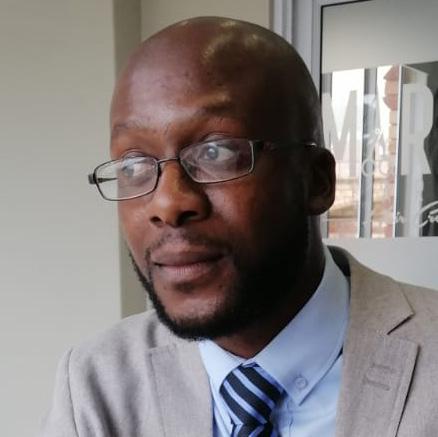
5 minute read
CEO’s Corner
Ms Ella Mokgalane Chief Executive Officer SACE
Advertisement
As several educators and leaders share their best practices in this publication, I chose to focus on courageous leadership conversations that require all of us to reflect on the impact of our leadership in our diverse contexts. Like Mellody Hobson in her Color-blind or colorbrave TED Talk, I also chose to use my positionality to be comfortable with uncomfortable leadership conversations that affect the oppressed and those experiencing social, cultural, and political injustices in and outside our institutions.
As one of the educational leaders in a public institution, I have observed, experienced, and practiced traditional or mainstream leadership that is dominated by the heroic and individualistic traits. This is the leadership that is often divorced from its context and fails to recognise that leading organisations is not a one-size-fits-all process; it cannot overlook its social, cultural, and political milieu. Therefore, I am challenging various mainstream leadership styles that maintain the organisational status quo and those that are mainly centered around internal organisational transformation in terms of focusing mainly on achieving organisational results at the expense of recurring social ills and inequities.
Notwithstanding the importance and role of mainstream or traditional leadership styles, like critical approach scholars I am agitating for the repositioning of leadership and shifting gears from an individualistic heroic perspective to transformative leadership (not transformational) one that is based on the interconnected relationships amongst individuals that are driven by social vision and transformation for a better and socially just world. This means having educational transformative leaders for social justice who recognise that excellence in organisations and schools means striking a balance between efficiency and effectiveness or academic excellence and a socially just agenda that is responsive to inclusivity, equity, embracing diversity and challenging the socio-economic and cultural injustices in our internal and external environments. Just like proponents of transformative leadership, I am maintaining that the balancing act I am agitating for between the two stances must co-exist to revolutionise leadership in our educational institutions.
Thus, in leading SACE that is making good strides in calling upon teachers to register online, uploading professional development points on the Continuing Professional Teacher Development Information System (CPTD-IS), and enhancing a reading profession through a virtual library, to what extent is my transformational efficiency and effectiveness leadership being exclusionary and perpetuating social injustice to those teaching and leading in rural and remote areas without connectivity and electricity? Similarly, your school as a transformational or transactional leader may be doing exceptionally well with matric results. Nonetheless, it may also have numerous learners who experience harm and serious violation through educators and community or family members who abuse them sexually and physically while the principal turns a blind eye due to their fixation with the 100% pass rate results. In this case, the principal lacks the moral courage and authority, social activism and agency, as well as deep examination of their values, principles, and beliefs that are pivotal to emancipating the learners from their social injustices and dehumanisation.
I am therefore underscoring that the urgent need for transformative leaders who will lead for social justice, liberation and emancipation is long overdue. These critical transformative leaders move from the premise of questioning the purpose of their organisations and
LEADERSHIP
their roles in achieving that defined purpose. If the response to their organisational purpose and leadership roles is (a) to ensure employees perform their duties in line with the organisational structure, job descriptions and get rewarded according for their performance; or (b) to run an efficient and effective organisation with 100% matric pass rate or to achieve set outcomes and targets within the allocated budget; then for many critical leaders leadership in this context is reduced to a day-to-day technical exercise requiring enhanced management knowledge, skills and traditional leadership styles despite the dehumanized and violated lives, together with exclusionary and unequal experiences. The difference between these traditional leadership styles is going beyond leading an efficient and effective organisation or 100% pass rate. They’re using the organisation’s diversity, employees’ cultural capital and varied backgrounds as essential tools to deconstruct exclusionary systems and reconstructing the achieving of organisational goals even better by creating inclusive, equitable and socially just organisations for the greater good and hope for all.
In conclusion, I am arguing that South African educational organisations are currently experiencing socio-economic and cultural injustices in a valueless society that affects employees, teachers, school leaders, learners, and communities to a great extent. Equally, the country is experiencing exponential and unprecedented change, with COVID-19 and Education 4.0 as the change drivers that require equal attention as organisational efficiency and effectiveness. As we lead educational institutions within this painted context, to what extent do we learn from Bronfenbrenner’s socio-ecological system that will assist us in considering our micro-systems (immediate environment), mesosystems, exo-systems (two relating settings), macro-systems and chromo-systems (change in the environment) to practice responsive leadership to internal and external context. This will assist in repositioning ourselves and gravitate towards leading transformative and emancipating interventions for social justice, greater good and a better world for all.






















